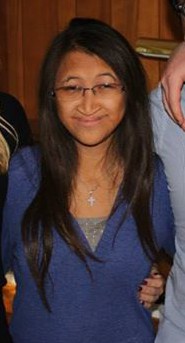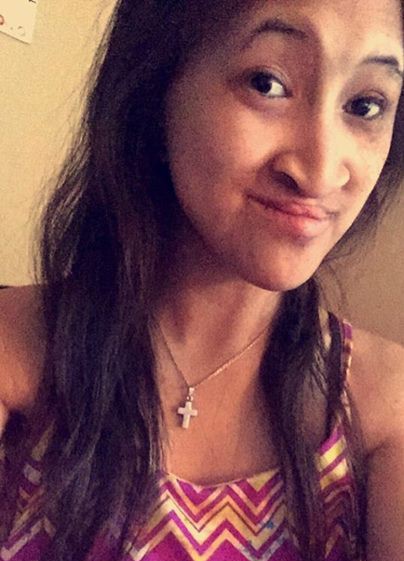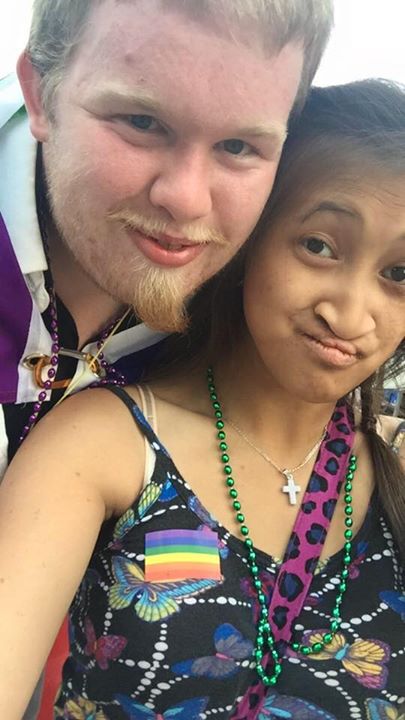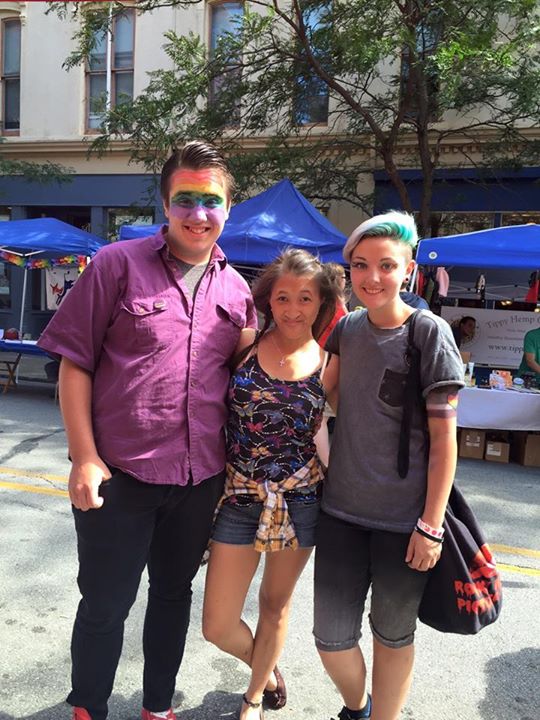Read Part 1 and Part 2 of Bracee’s story. When we last left off, Bracee was having a difficult time getting the PROSE lenses in and was feeling very frustrated…

I talked to my mom on the phone and as usual, she had the right answers. The final solution for my anxiety turned out to be an over the counter medication to help me relax. This was the tool necessary for overcoming the “hump” in the road.
With this additional aid, on Wednesday I was more calm and a different method of insertion was proposed. Drawing from experience with other EEC patients, the PROSE coordinator, Michelle Ricks, put forth the idea of seeing how well I could put the lenses in with a special contact lens stand.

The lens is placed on a tapered stand that resembles a small plunger with slight suction to hold it in place. It is then overfilled with warm saline (to prevent the corneal reflux and possible bubbles) and the eye, with lids spread wide, is lowered onto the lens and the suction of the saline attaches it to the eye. This process of insertion was extremely intimidating at first, but with much patience, moral support and good advice from Michelle and Marc, both lenses were able to be inserted.
Once the patient is able to get both lenses in, they stay in the eyes to settle and become comfortable, and then a few hours later, the doctor checks the fitting and the vision in order to determine what changes are necessary.

From Johns Hopkins, the prescription for new contact lenses is sent to the Boston Foundation for Sight where the new pair of lenses are made and sent back to Baltimore overnight in time to try them in the next day. Once a final pair is created for the patient, the PROSE coordinator teaches the patient how to properly insert/remove and care for their new eyes.
The first set was of a default size and with no prescription, but when we went out for lunch in order to let them settle, the difference in comfort and even vision was immediately noticed. My phone was not held inches from my face, my eyes were not nearly as squinty and were much wider than they had ever been. My eyes felt entirely moisturized and comfortable, and from then on I knew things were finally looking up, literally and figuratively.
The remaining two days of the week consisted of improving the contact lenses and customizing them for my eyes and vision, along with getting more used to lens insertion/removal. It still took time to get used to, but by the end of the week I was much better and much more confident about it than I was the first day.
After the weekend break, Dr. Hessen and Michelle were credited for squeezing me into their schedule for an extra day or two the following week (appointments that were not originally scheduled), in order to finalize the contact lenses and finish up the process. They are much appreciated for that and more.

The last day was bittersweet. It was a much tougher week and a half than I had expected, but I was entirely grateful for the resilience, understanding, and patience of Dr. Hessen, Michelle, Marc and my dad. In the end the road bumps were overcome, the barriers were broken, and the challenges were faced. The best part of it was the final destination: I was able to see vividly and clearly.
When I arrived home, things had already significantly improved. I was able to see things I hadn’t noticed before. I was able to be more in the moment and involved because I was more aware of my surroundings. Although at that point we had hearing and vision accommodations set up for me in school, I was able to see things written on the board, better understand situations, and participate.

Friends and family noticed the obvious lack of squinting and looking down, and they were happy to see my face and my eyes. Getting used to the contact lenses was something I had to do, and eventually I couldn’t do anything without them and the comfort and feel of having functional eyes. The entire process was worth it, and I couldn’t thank enough everyone who helped me go through it, who believed in me and who pushed for it to happen.
Editor’s Note:
Bracee Dudley is a high school senior who is affected by ectrodactyly ectodermal dysplasia-clefting syndrome (EEC). She contributed this three-part series on how she learned about PROSE lenses and her journey to obtain them and find relief for her debilitating dry eyes.
Learn more about the BostonSight® PROSE at the Boston Foundation for Sight web page: https://www.bostonsight.org/PROSE-treatment/About-PROSE